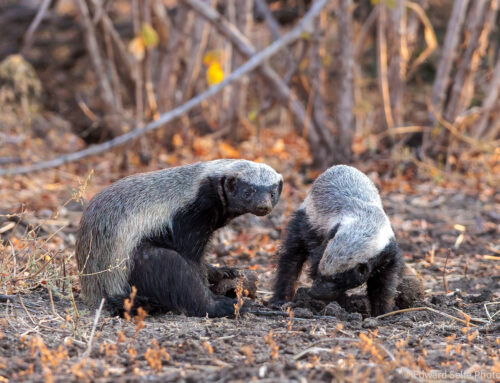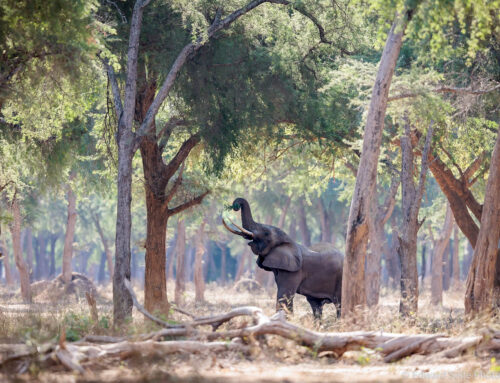The South Luangwa is certainly the best known National Park in Zambia and for good reason. It has a superb density of game, incredibly beautiful scenery and some of the best predator sightings in Southern Africa. It draws such attention on the safari scene that other National Parks in Zambia don’t get the attention that they deserve.
The Kafue NP is the largest in Zambia and the second largest in Africa after the vast Selous Game Reserve in Tanzania. Its size is important in that it allows for incredible diversity of habitats and range of species; 20 antelope species alone have been recorded and many are readily visible.
While the promise of good sightings is essential, the key to a successful photo safari is excellent guiding so I was excited to plan a trip with two skilled and passionate guides, Phil Jefferey and Tyrone McKeith. Their company, Jeffery & McKeith Safaris runs Musekese and Ntemwa-Busanga Camps in the northern part of the National Park. Musekese is in rich, riverine habitat along the Kafue River while Ntemwa is in a prime spot at the southern end of the well-known Busanga plains.
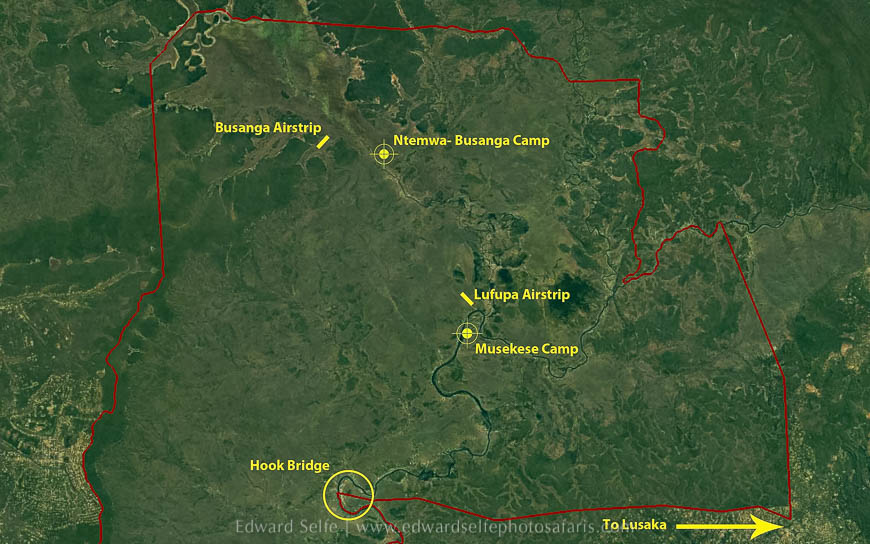
I travelled in from Lusaka by road on a very comfortable 5 hour transfer to Musekese Camp. We drove through beautiful miombo woodland habitat and I was able to do some birding and see some mammals long before we reached the camp. At this dry time of year, most game is concentrated where there is water and forage so I was excited to think about the densities that I would find at the camp which is very near the river. Indeed, arriving in camp, I looked out onto the floodplain to see hundreds of antelope, a couple of herds of elephants, warthogs and a thriving range of birds including fish eagles, wattled and crowned cranes, waders and storks. Apparently the staff named the area Eden when they saw it and that seemed fitting to me!
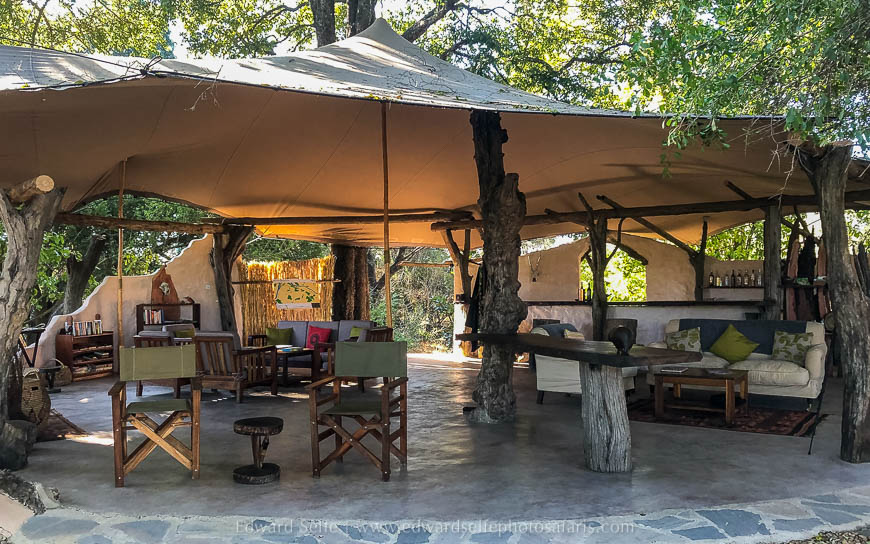
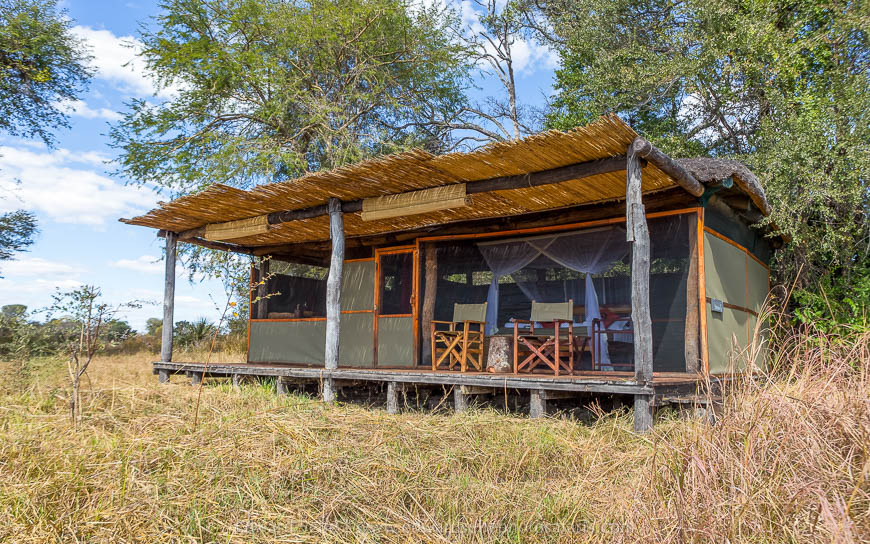
After a quick lunch, I was keen to get out and see the surrounding areas. Very soon after leaving camp, a herd of large bull elephants was leaving the floodplain and heading to the forests. We were in their path so we stopped and let them surround us and then pass on by. The light was low in the sky and the dust that they kicked up created some interesting effects.

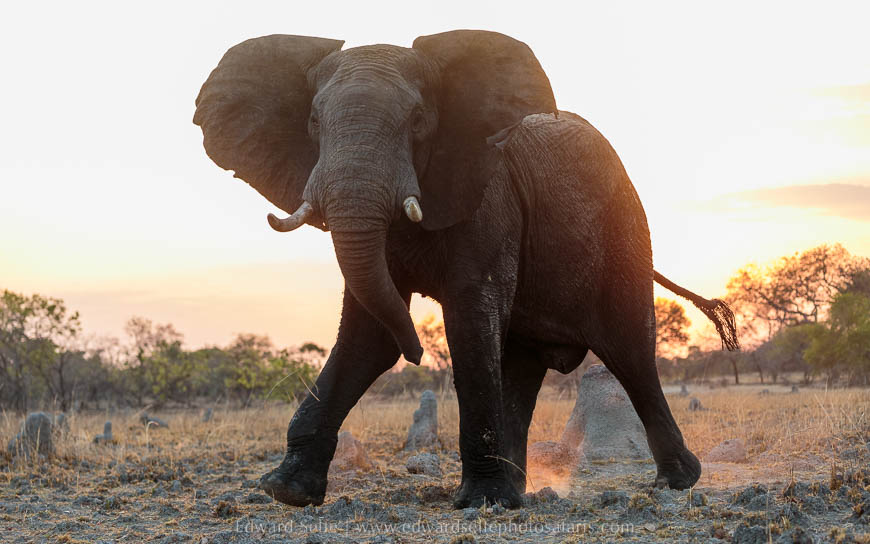
We moved on to look for a leopard that the guides had seen in the morning. Luangwa is famous for its leopard sightings, so I was interested to see how the leopards of Kafue would compare from a photographic perspective. Tyrone talked about how the hyaena population is not very large so the leopards do not need to stash their kills in trees, immediately offering a variation on the kind of sightings that we have in Luangwa. Looking on the tops of the many termite mounds nearby we quickly located the young female resting and enjoying the small breeze that the elevated position gave her.
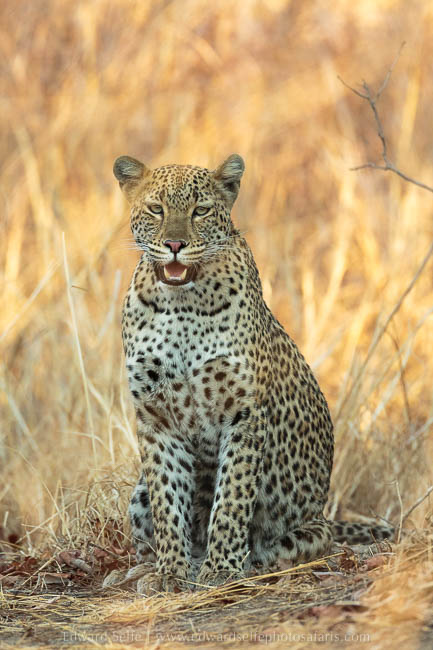
I was immediately surprised how large she was… For a young female, she was stocky and well-built, already larger than any female that I had seen in Luangwa. Another interesting comparison. With the golden grass surrounding her, soft afternoon light and her very relaxed nature, I was aware immediately that this camp’s leopard sightings would be something special. Talking to Tyrone while we watched this female, it was clear that their season had been filled with excellent predator sightings.
While many areas of South Luangwa are very remote and private, Musekese takes this to a new level. They are absolutely the only camp in this part of Kafue and offers an exclusivity that is very valuable to photographers. Not only was there no one else on the sighting with us, but there was no one else who could have been; the other group from the camp were the only possibility and the had gone boating, and were no doubt also having a fantastic time!
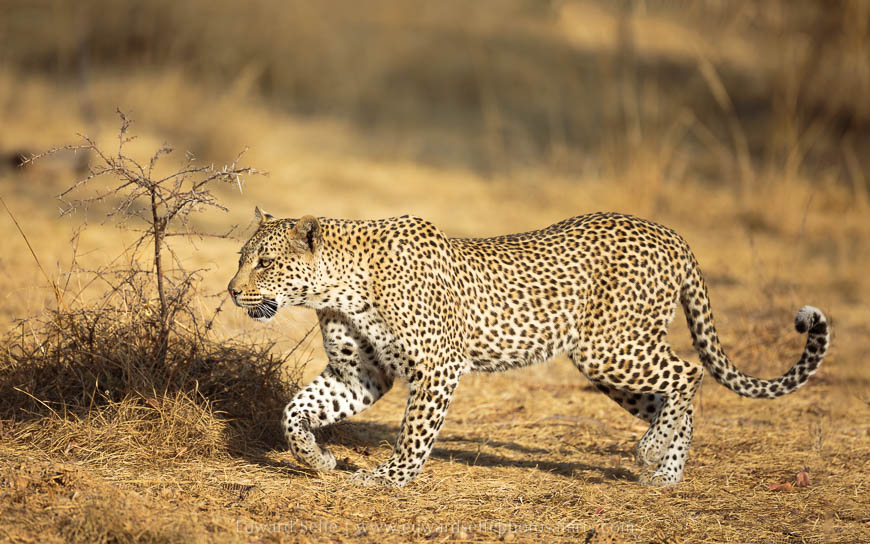
Of course, sightings such as this don’t happen every day, but I was certainly impressed with my first afternoon in Kafue. Settling down in front of camp for sundowners, as the light was fading, we spotted the resident lion pride across the floodplain. With them was a very large male with a superb black mane, and I really hoped that I might get a chance to see him in the morning when I was scheduled for a morning drive.
Being a small camp with only space for 8 people, breakfast is a tasty but quick event, allowing guests to get out on safari when the air is cool and the light is soft. This is perfect for photographers and I appreciated that this was the standard protocol at this very safari-focused camp. I wanted to see the range of habitats and travel the loop roads in the area during the morning drive so, after a brief scout for the lions – who had gone into a thick bush – we set off to see the area. Almost immediately we spotted a little owl carrying something that it had caught. It turned out to be a pearl-spotted owlet with a mouse that was quite a large prize for such a small bird!
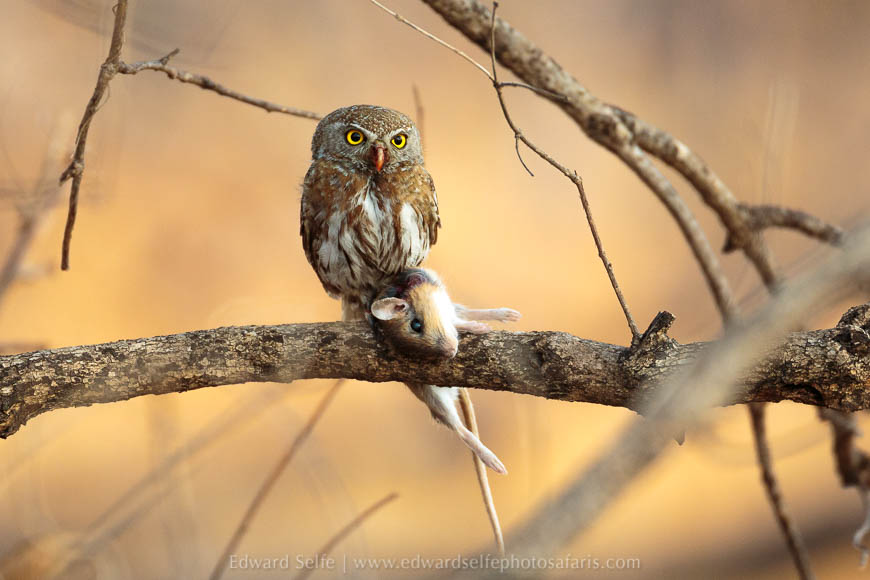
The rest of the morning was spent traversing the area, checking out various locations and looking for unusual sightings. We saw a herd of roan antelope (a very unusual antelope seen only in a few locations in Africa) but they quickly moved on when they saw us, and a number of bird species that are special to Kafue and not seen in Luangwa. I also talked with Gareth, one of their guiding team, about the opportunities for photo safaris in the area and gathered really valuable information about sightings, times of year, animals movements and special events during the season. Based on this, I could see that anytime between July and October would be a superb time to visit this beautiful area.
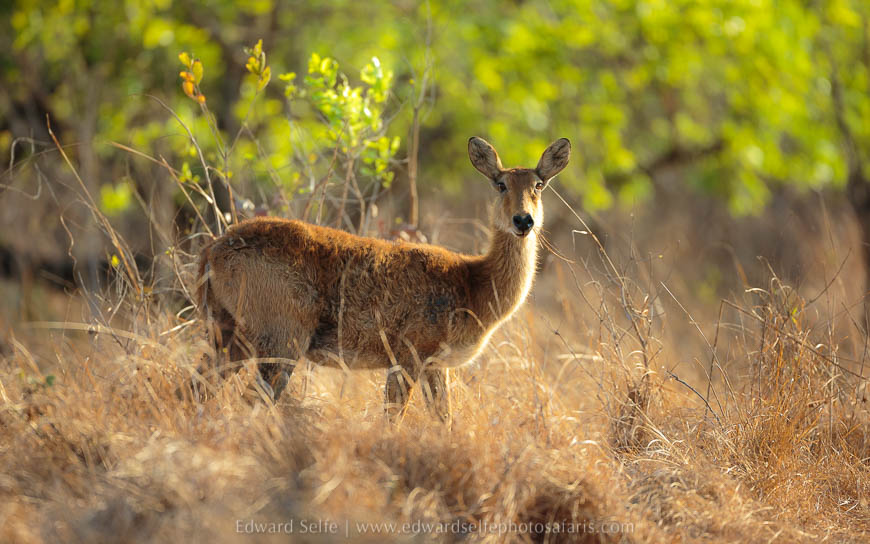
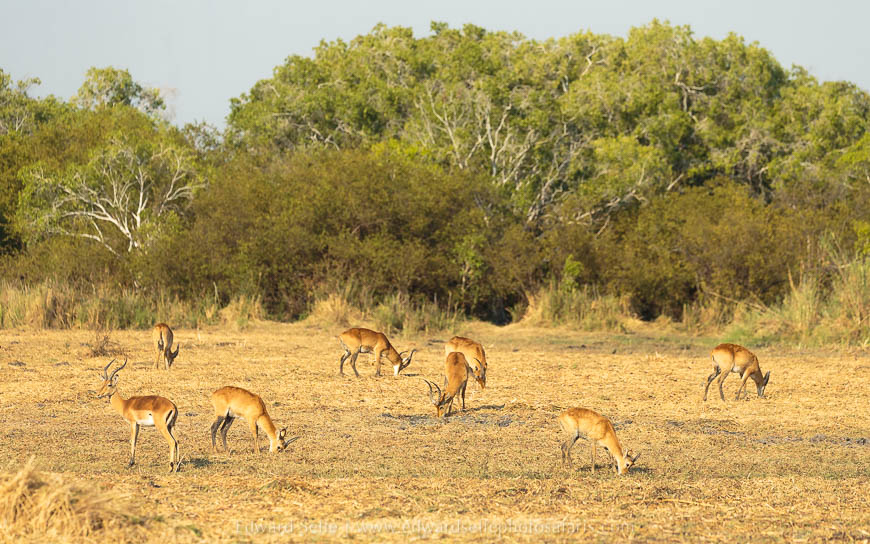
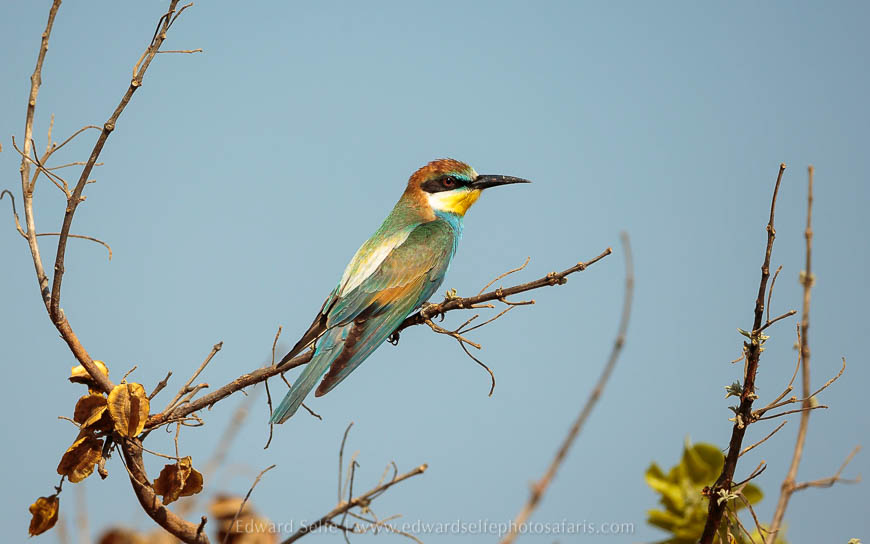
The Kafue River is a rocky, steep-sided, perennial river that runs very close to Musekese Camp. The best way to enjoy this very important water source is to boat along it. Musekese has two harbours allowing guests to travel up or downstream to target particular sightings. I love boating safaris, and I run trips to Lower Zambezi NP to take advantage of the superb angles and unusual photos that boat safaris offer, so I was really excited to take a boating safari on my second afternoon.
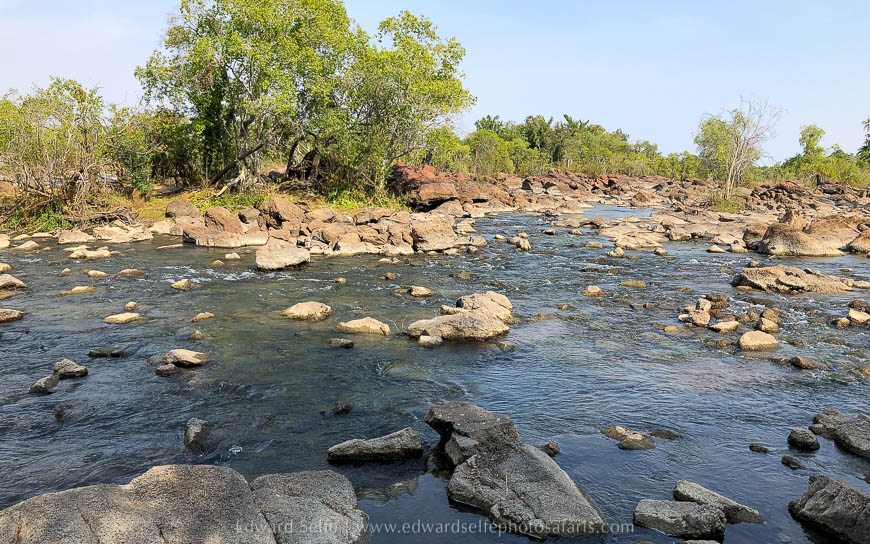


Immediately we left the harbour, sightings began to happen all around us. Hippos bobbing up and down in the water to see what we were, crocodiles in the inlets along the riverbank sun basking and waiting for prey, birds in nearly every tree, including beautiful species such as the half-collared kingfisher above. Another special was a brief view of an African finfoot, a highly prized species for keen birders. We also scoured the banks for any sign of predators since leopards and lions like to rest among the roots of the ebony and water berry trees to take advantage of the river-soaked sand. We didn’t see any this time round, which surprised the guides and gave me an indication that this is a fairly common sighting on afternoon boat safaris.
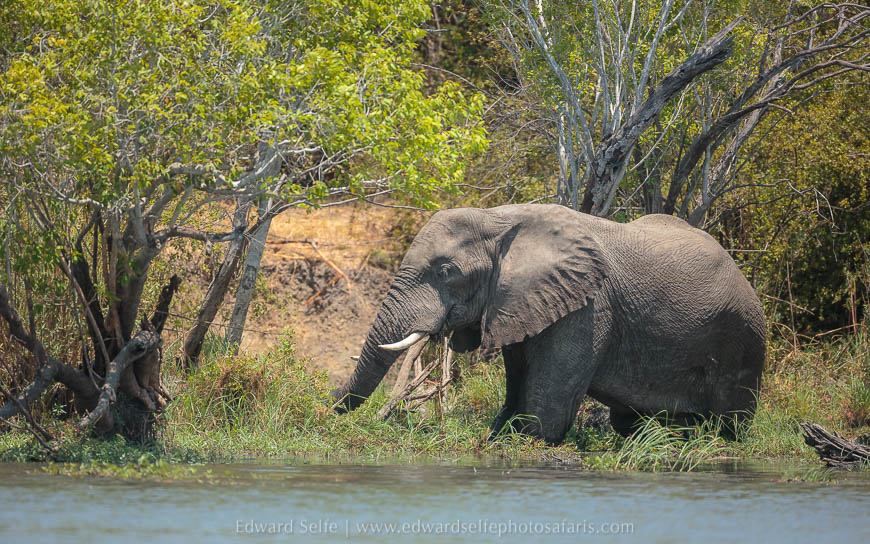
After an hour or so, we came close to an island in the river where a number of African skimmer pairs were nesting. As we approached, they started to hunt along the shallow water ways, flying with their lower bills dipped into the water and hoping to snatch a fish from just below the surface.
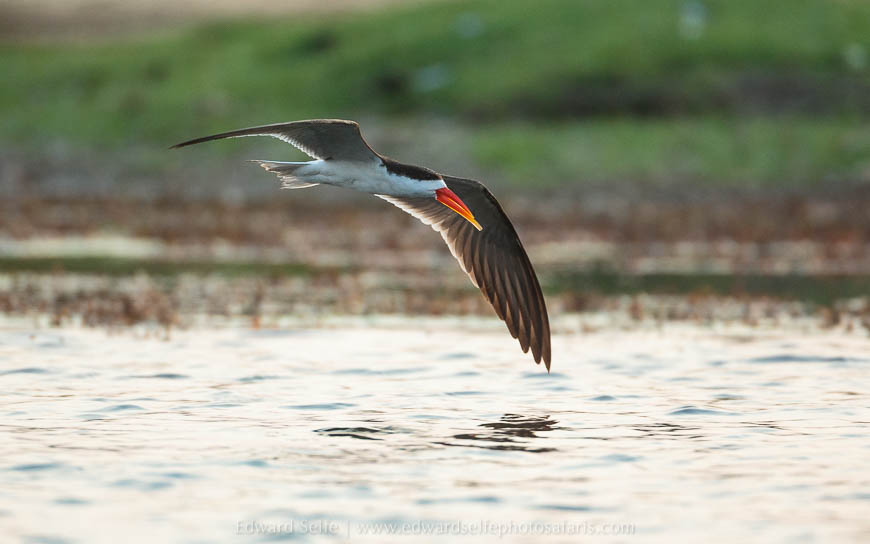
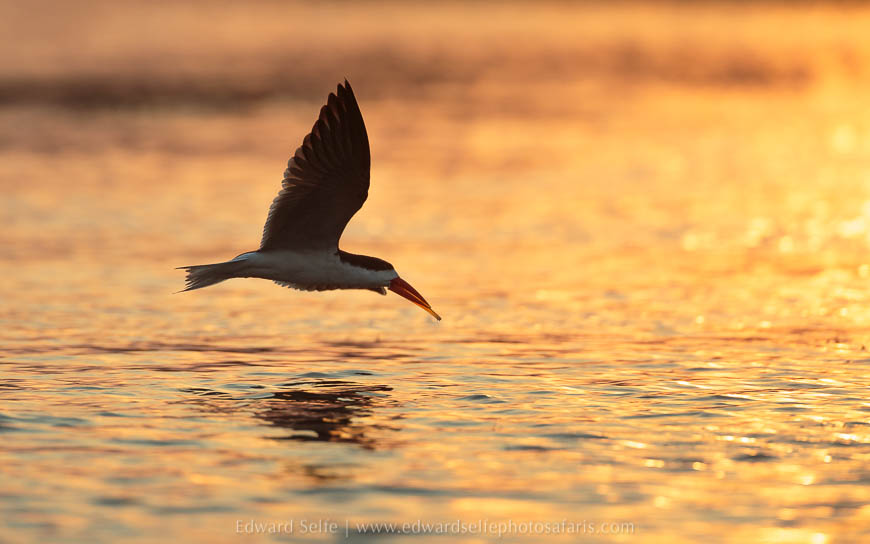
It was easy to see how giving an afternoon to a boat cruise would be a beautiful experience offering different and impressive photos of birds and mammals in the water as well as the chance of a predator along the banks.
The following day, it was time to travel to Jeffery & McKeith Safaris’ plains bushcamp (called Ntemwa-Busanga) on the southern end of the famous Busanga Plains. I took a short flight from Lufupa airstrip north to Plains airstrip where I was met by Phil Jeffery who would guide me for the next couple of days.
As we headed to the camp, I could feel the excitement building in me about this stunning area. Large, black blobs on the horizon indicated sable antelope bulls; herds of reedbuck, puku and hartebeest moved aside as we drove along the tracks and unusual grassland birds drifted away from us as we approached. Arriving at the camp, we climbed the steps to their viewing deck and I could see for 10 kms across grassy plains towards the far tree-line. Dotted across the plains were wildebeest, puku, warthogs, sable, oribi and, far in the distance, a herd of buffalo.
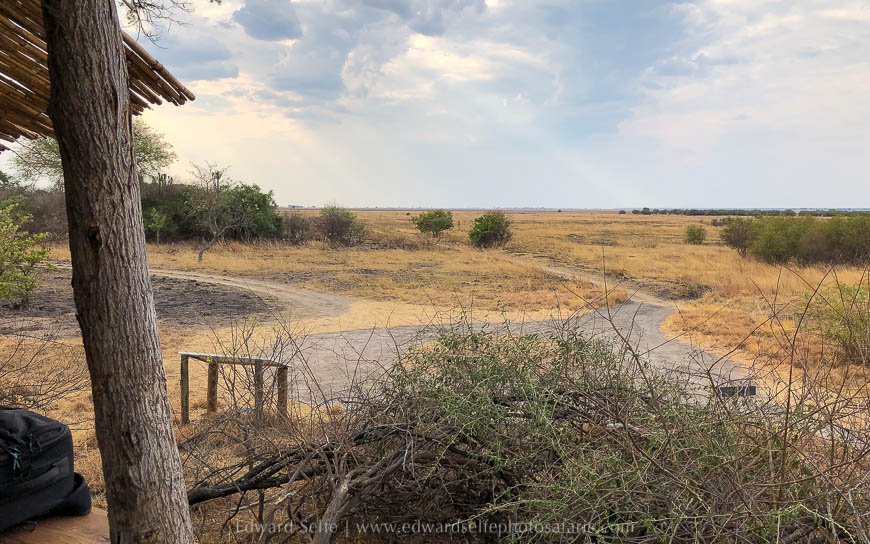

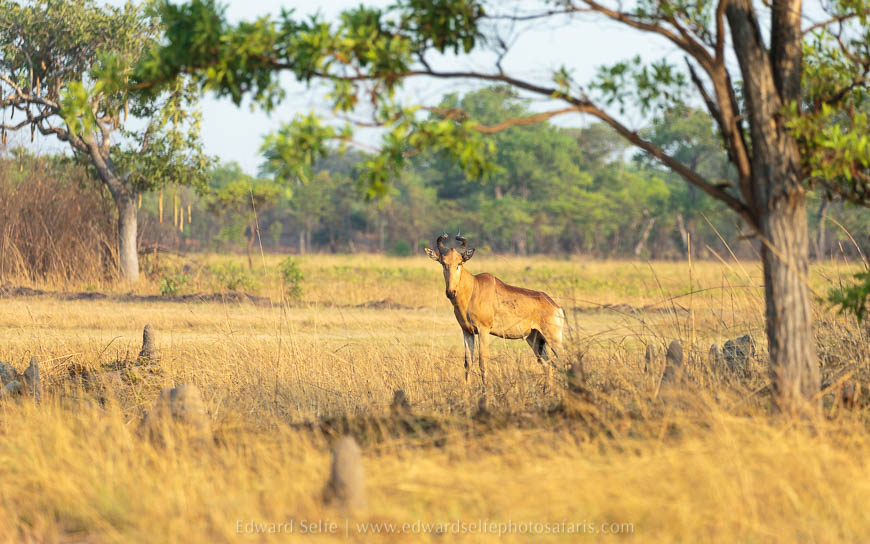
We set out on our first afternoon drive, keen to find a leopard in the stunning tangles of waterberry roots along the tributaries of the Lufupa river. We searched hard, but there was not one to be found so we settled ourselves with a large hippo bull in a muddy pool and watched him and some attendant large grey mongooses foraging nearby.
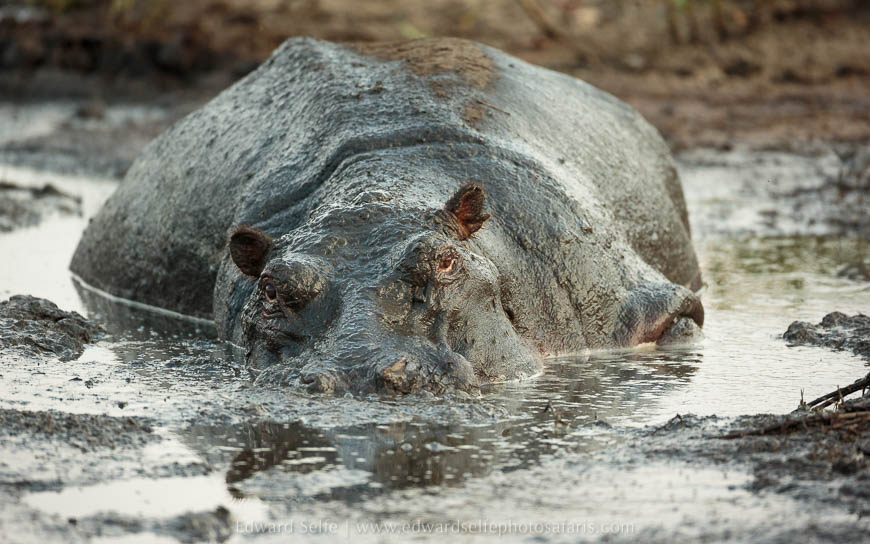
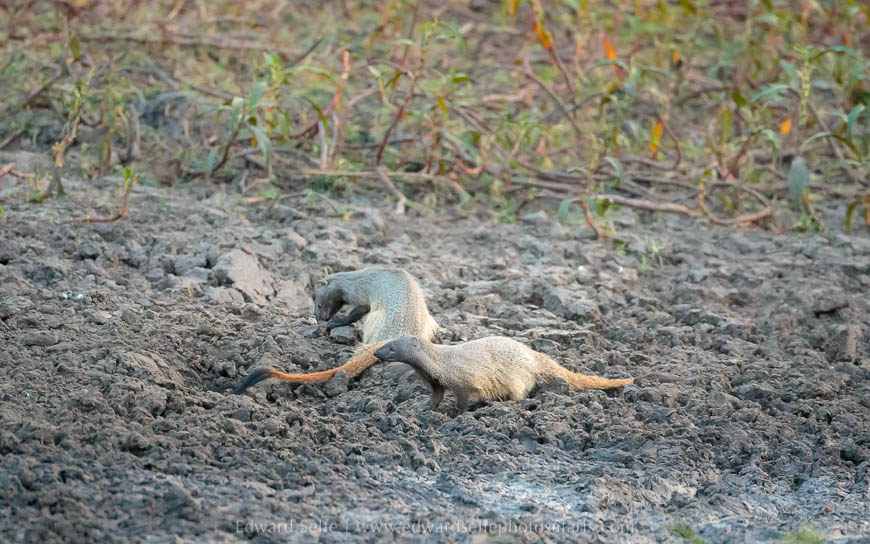
Phil had offered to take a full-day drive the following morning so that I could see as much of the Plains as possible. I jumped at the chance, particularly as Kafue is cooler than the Luangwa so we would find the temperatures much more comfortable. We started early, looking for spoor on the roads and listening along the tree-line for signs of predators. A small herd of lechwe – normally only seen in the northern part of the plains – were running across the dry grassland and I was excited to think that there might be dogs around. But it turned out to be a small pride of 8 lions in pursuit. While we thought that they should easily catch the antelope herd, we lost them in the grass and decided that we would continue north in search of Busanga specials. Not far away, we spotted fresh cheetah tracks on the road; we scouted around on top of all the nearby mounds and listened for any sign of this wonderful predator but he was not to be found. However, we agreed to leave time to look carefully for him in the evening on the way back to camp.
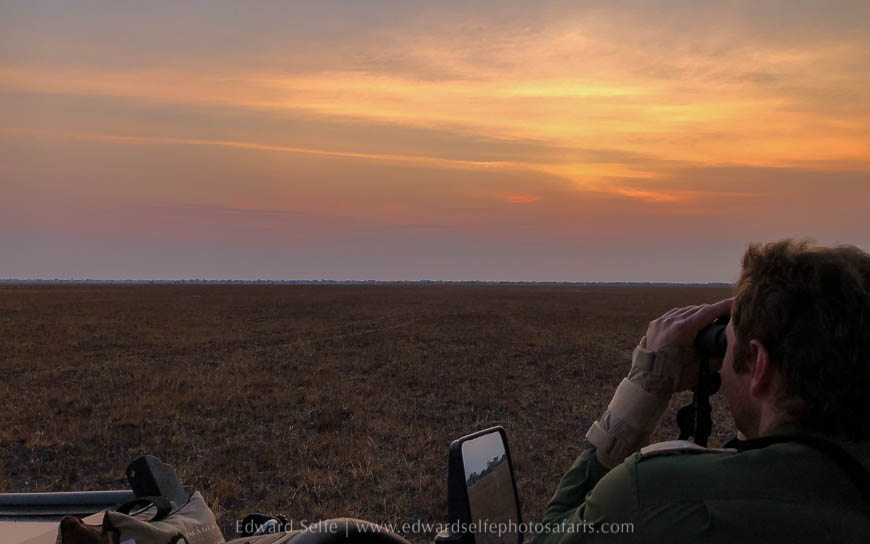
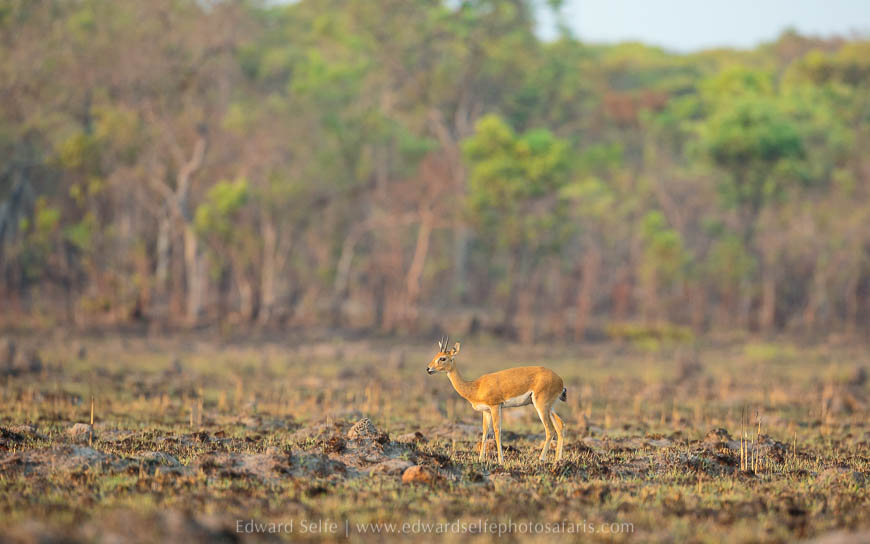
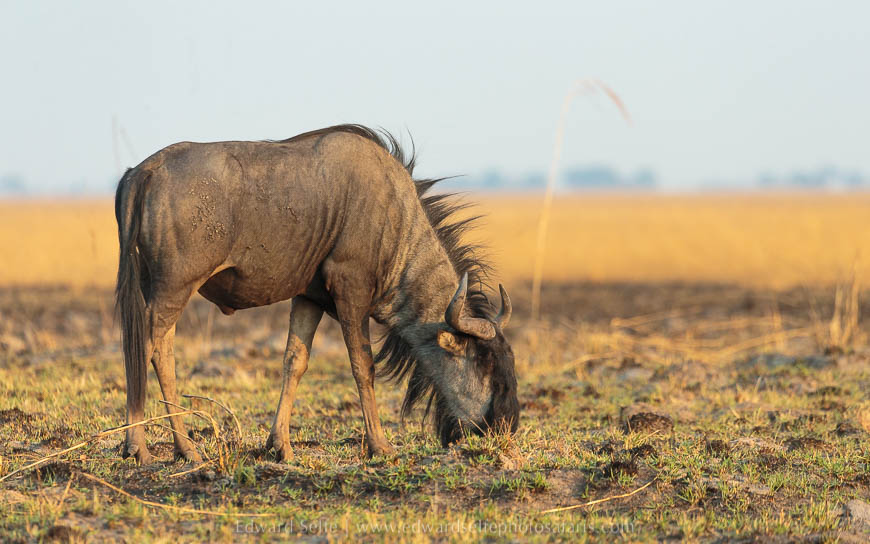
With relatively little time, we moved quickly from sighting to sighting, keen to see as much as possible, but I could see that with more time in this area, we could target certain areas each day and spend time capturing superb images of wildebeest, oribi, zebra, warthogs and a multitude of birds and small mammals. Most of all this was the case with an incredible herd of around 75 sable antelope which can usually be found just north of the airstrip. I could have spent the whole morning with them, enjoying the rich, dark coloured bulls, the beautiful facial markings of the females and the comedy faces of the youngsters who were all piled up in a crèche.
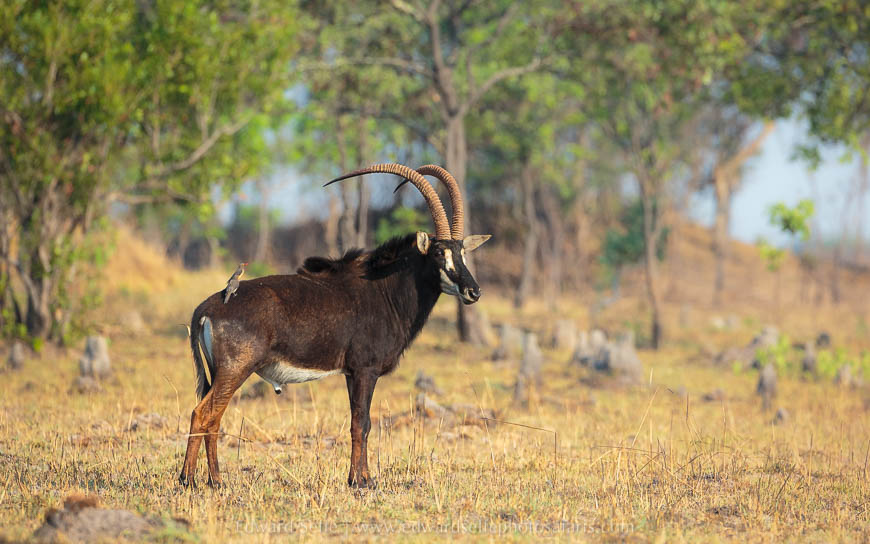
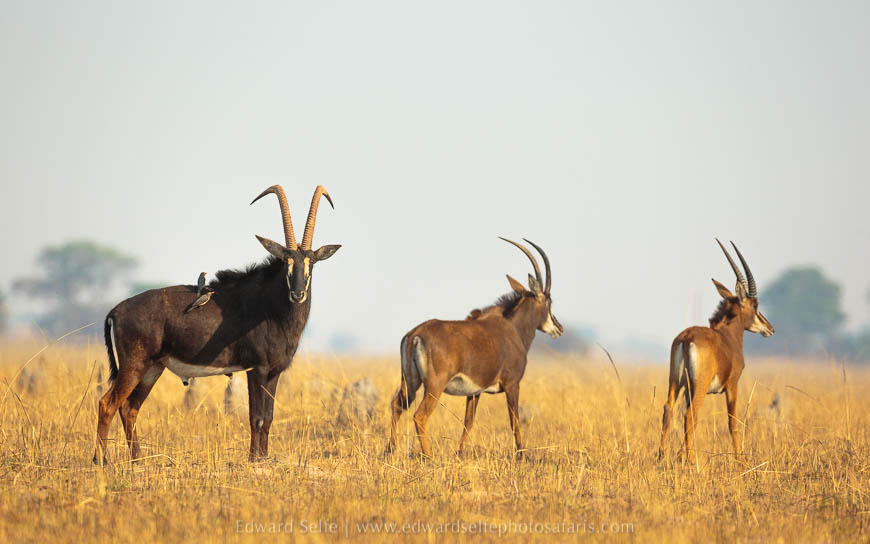
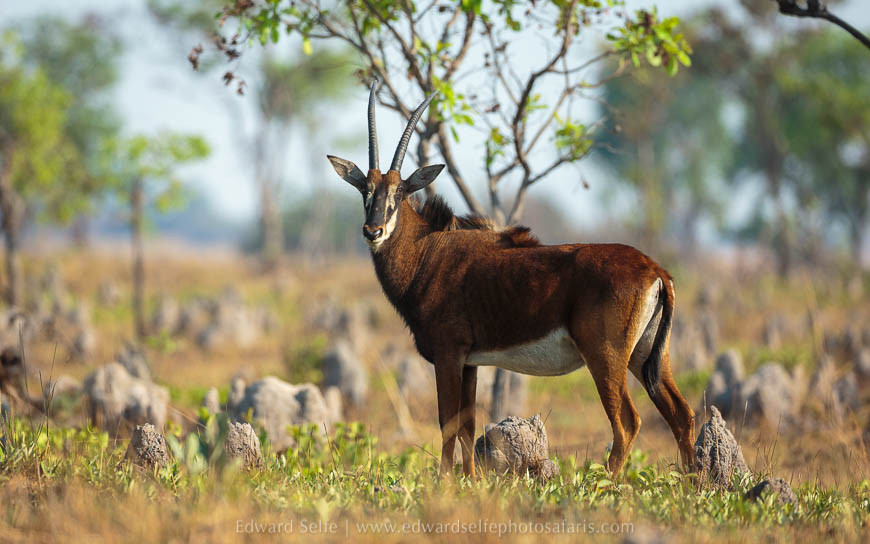

As we left the woodland areas, the plains began to open up in front of us. We started to see herds of lechwe antelope in the distance, identifiable by their inelegant gait that is much better suited to flooded waterways than dusty, dry land.

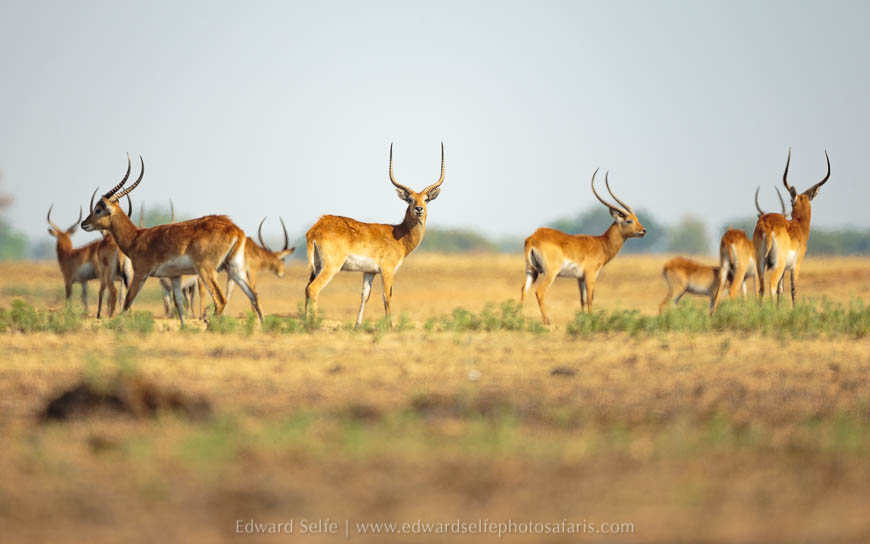
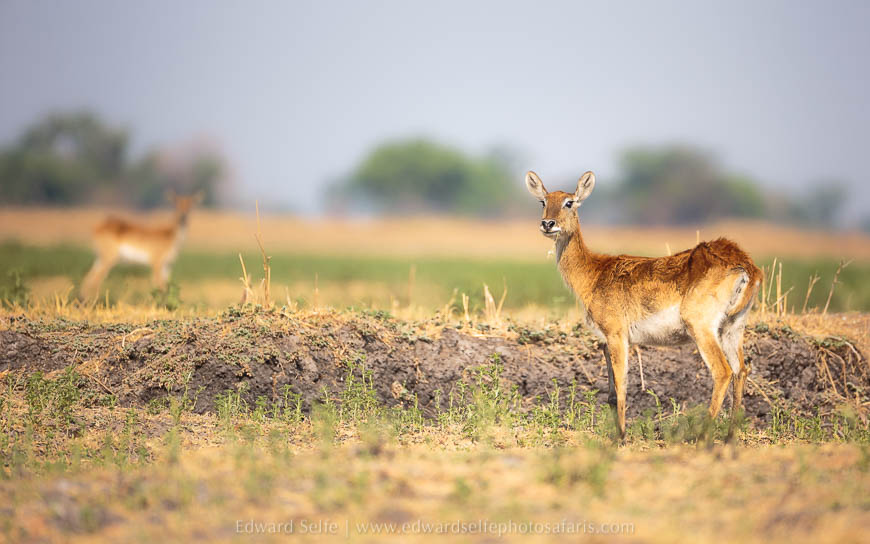
The wide open spaces allow for long-lens shots of small, distant subjects that are skylined; with the dense forested habitats in Luangwa it was most refreshing to enjoy a habitat so different from my normal guiding area.
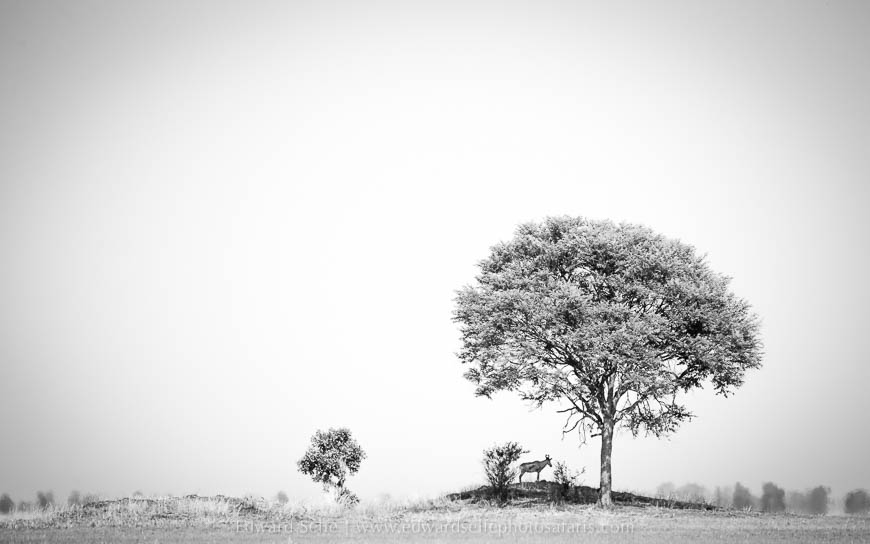
It was starting get hot at this point – even in the higher altitudes of Kafue, 11.00 in late October is pretty warm! – so we decided to cover some ground and reach the flooded areas around the papyrus swamps in the very north of the park. This is where the lechwe can be found in vast numbers and where we would have a chance of finding the papyrus pride, even if they would surely be in the shade by this time.
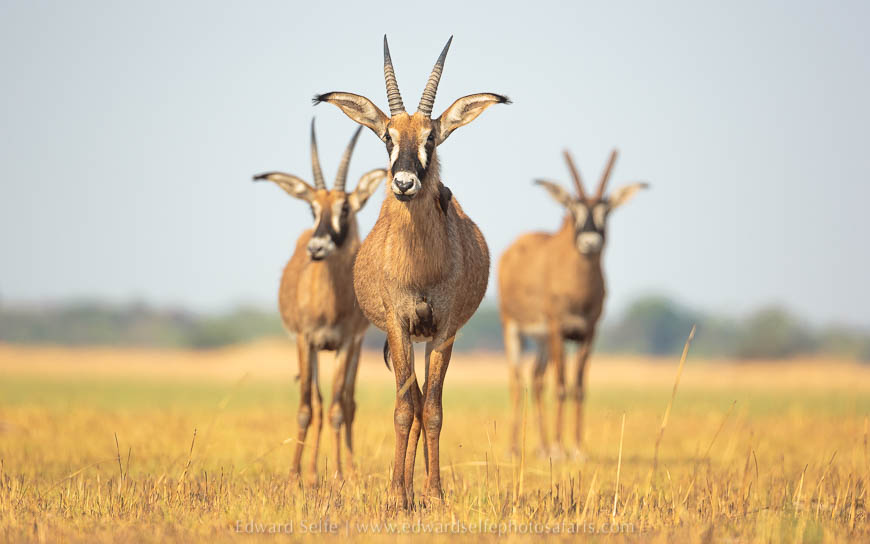
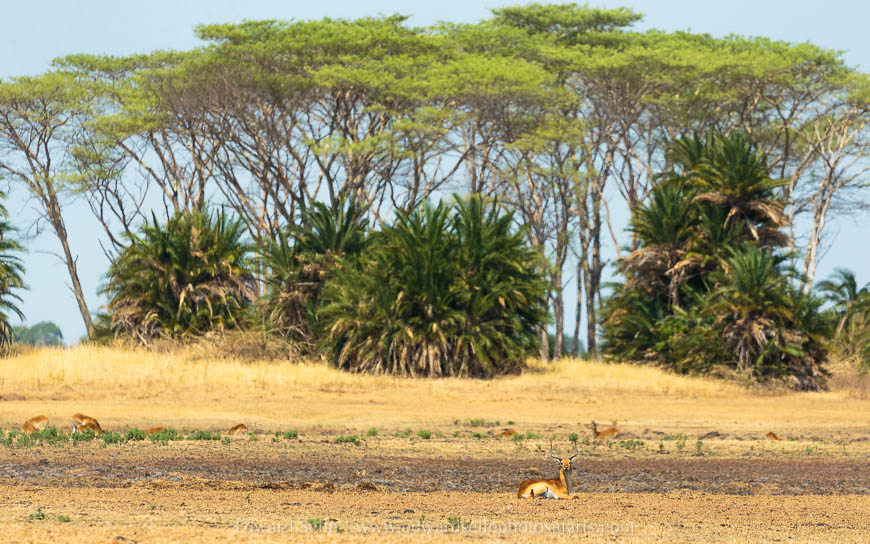
It was getting hot by the time we reached the lions’ favourite area and in fact the mirages and heat haze made photography almost impossible at this lunchtime hour. But we continued searching for the lions until we found them in a thicket with the help of a guide at a local camp. They were sleeping off a lechwe meal, but one of the youngsters rose and showed off the start of a mane that will grow very large and black, identifying him as a Kafue lion. His father was also sleeping in the thicket, but he didn’t lift his head long enough to give a photo that showed him at his best. I could see that with an early start and a target of this northern area, we could reach the lions while they were still out in the open areas.
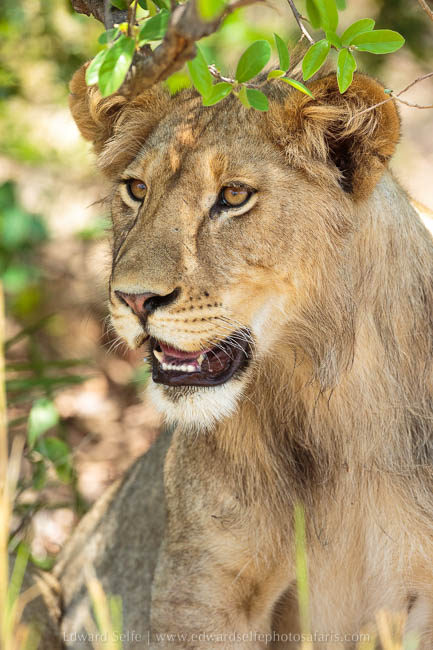
With lunch beckoning, we headed to a grove of trees and parked up to eat lunch and count the waterbirds in the nearby swamps. So far on the trip, I had noted more than 150 bird species and we kept moving the goalposts and hoping to find 10 more species. By the end, without trying too hard, we had notched up 170. This national park with its excellent range of habitats is great for birders seeking unusual species.
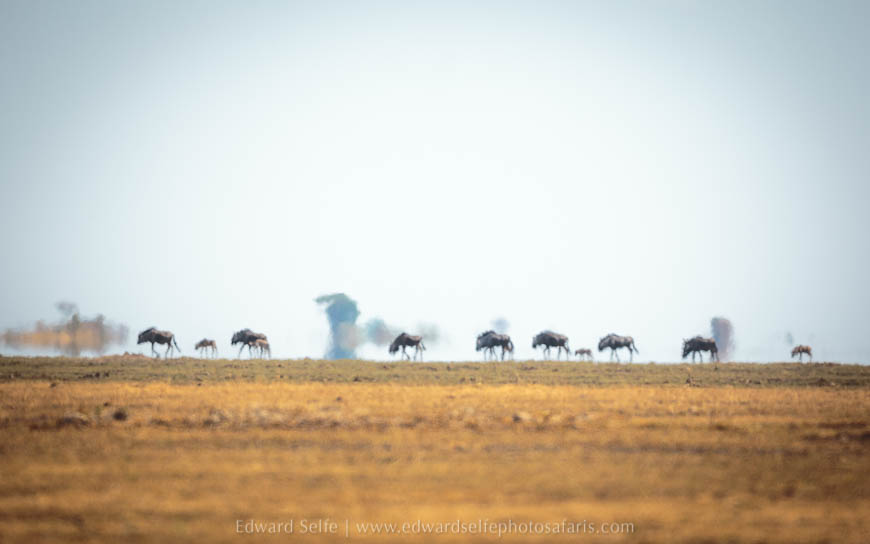
As we set off from lunch, we disturbed a group of lechwe from the papyrus swamps and they ran for the open ground.
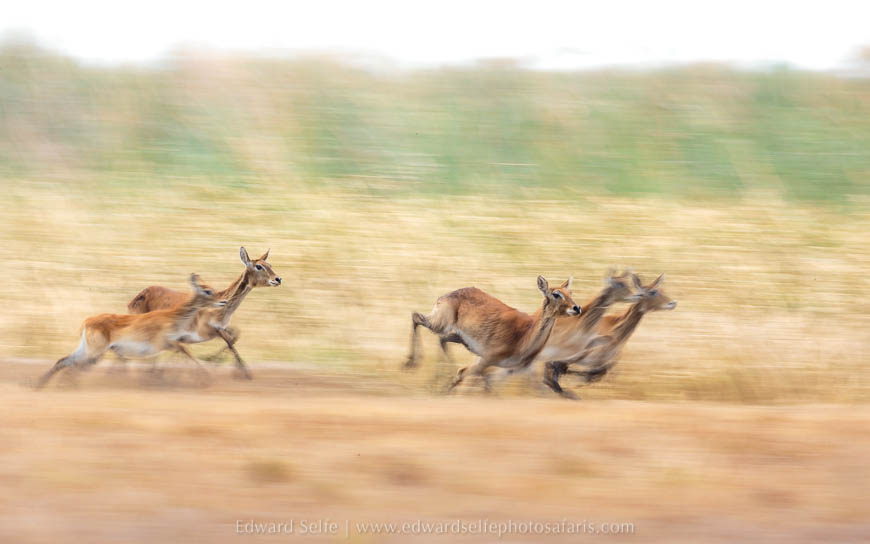
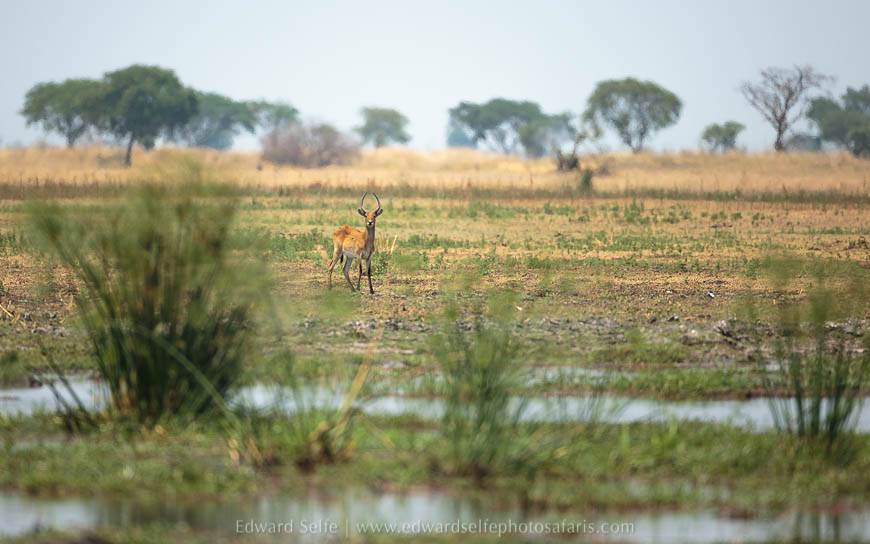
We started to move south again towards camp, taking in sightings as we went, but keeping time to search for the cheetah close to the camp. We spotted wattled cranes appearing to bicker over a food source, lechwe in their preferred habitat of flooded channels and roan antelope on the short grass plains south of the swamps. We were just too late to catch a large herd of elephants as the moved across an open area, but we watched, against the light, as they moved into the woodland.
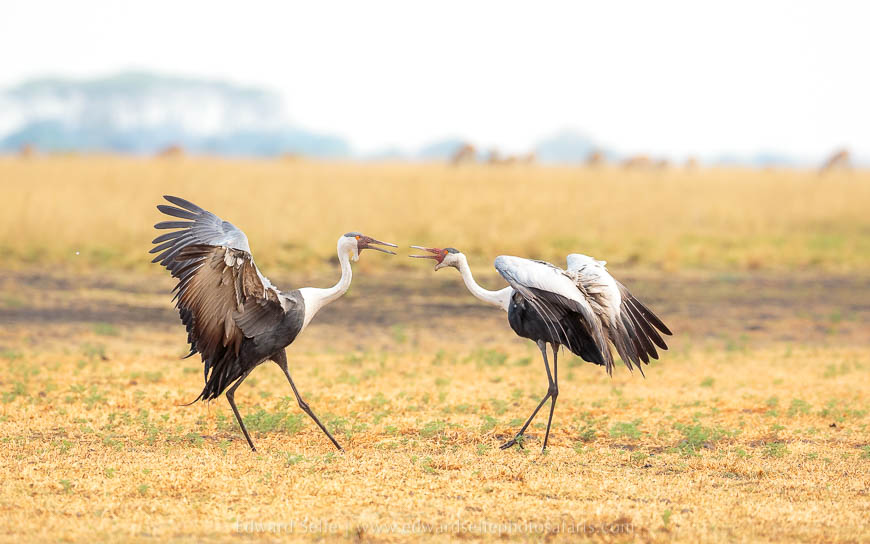
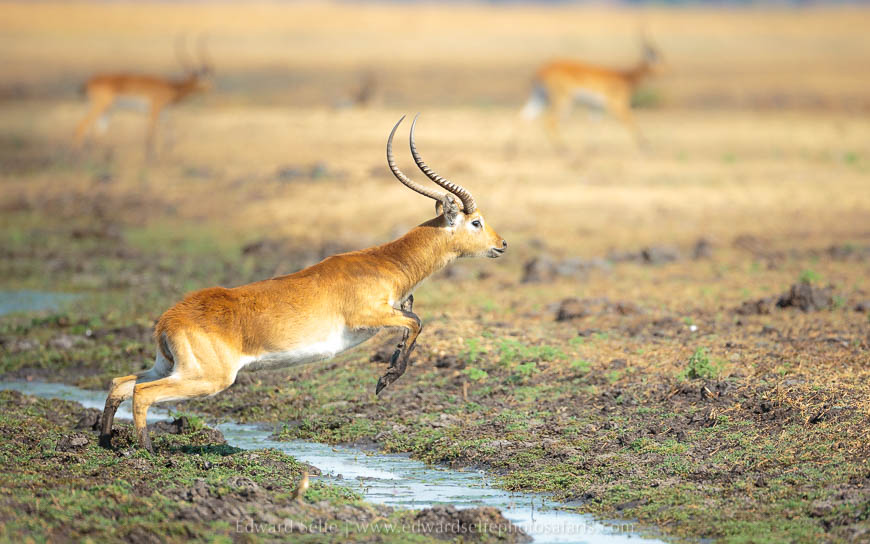
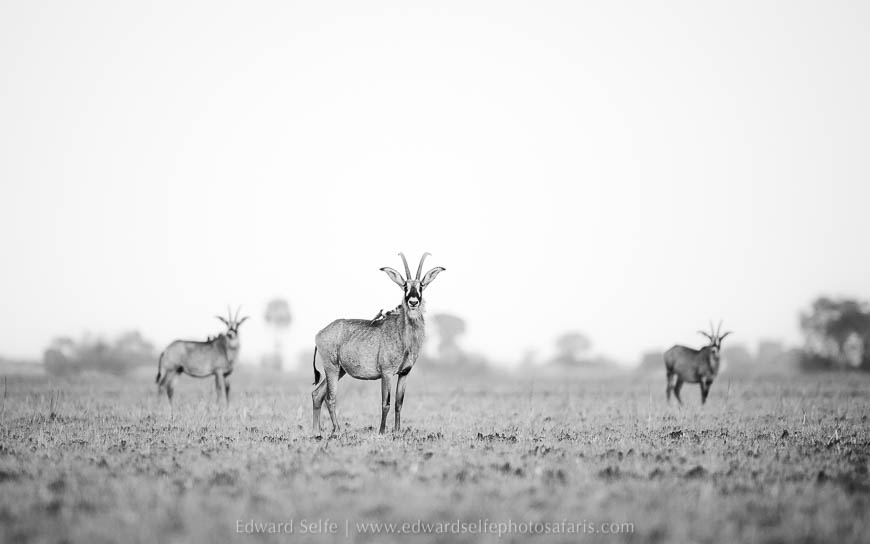

Arriving close to the camp, we scoured around for any sign of the cheetah whose tracks we had seen in the morning. We checked all the mounds nearby, searched a waterhole and began to think that there was no chance of finding him. Of course, a cheetah can stop, lie down and go totally flat in the grass which would make him impossible to see as we drove past.

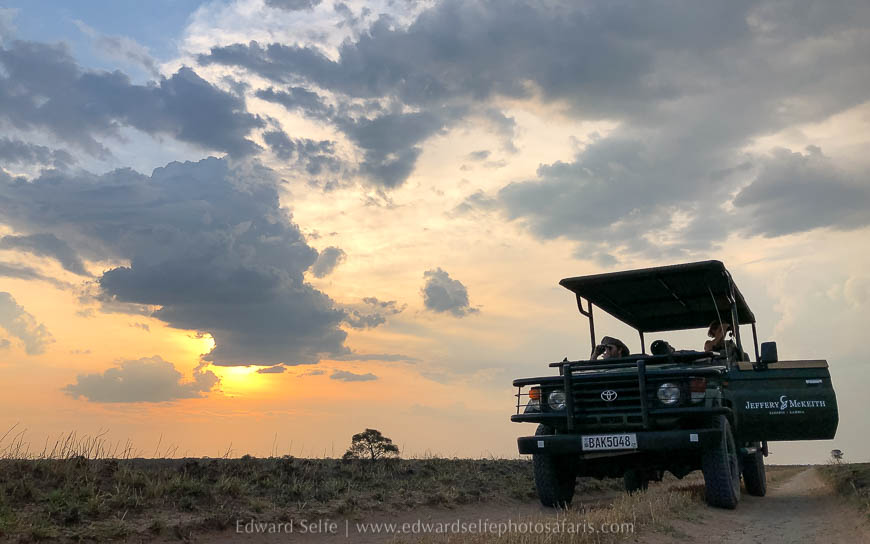
We started to head to camp, having assumed that the cat had turned back or moved into the woodland when we spotted him, close to the road, heading towards camp! It was extremely exciting to find him especially having searched so hard and used every method known to track him down. The light was fading and he was slightly nervous of us, but we still managed to get a great view of him, striding through the grass, scent marking a tree and then melting into the longer grass! This sighting alone had made the trip to Kafue worthwhile, not to mention all the other fantastic encounters that had led up to it.
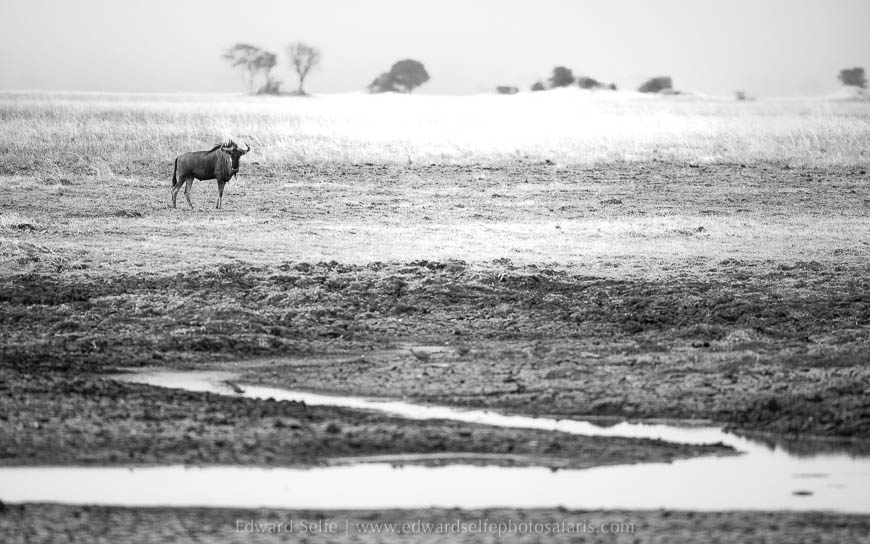
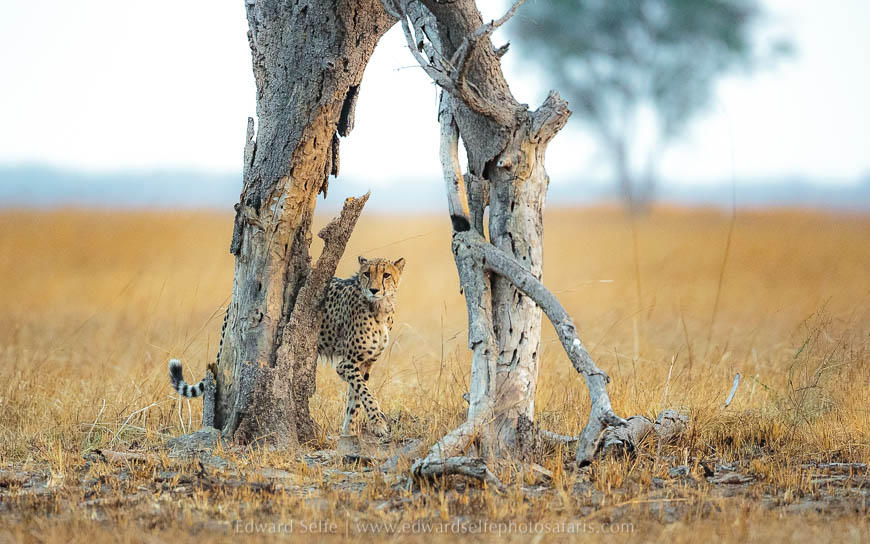
With the light gone totally, and nothing that could top that, we headed to camp….but wait, what is that in the grass? A serval hunting in the twilight! Lions, jackal, cheetah and serval all in one day…what a brilliant experience.
That was, very sadly, my only full day in the Busanga Plains, but anyone reading this can clearly see the potential of that area….we saw all the above in only one full day. A stay of 4 or 5 nights in that area, perhaps shared between Ntemwa Camp in the south and one of the bush camps near the papyrus in the north, would give time to target all the specialities of the region.
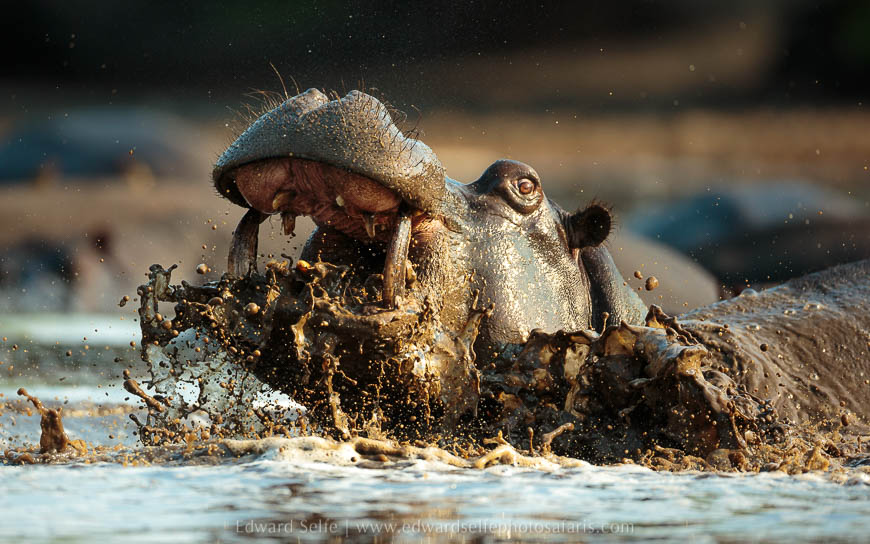
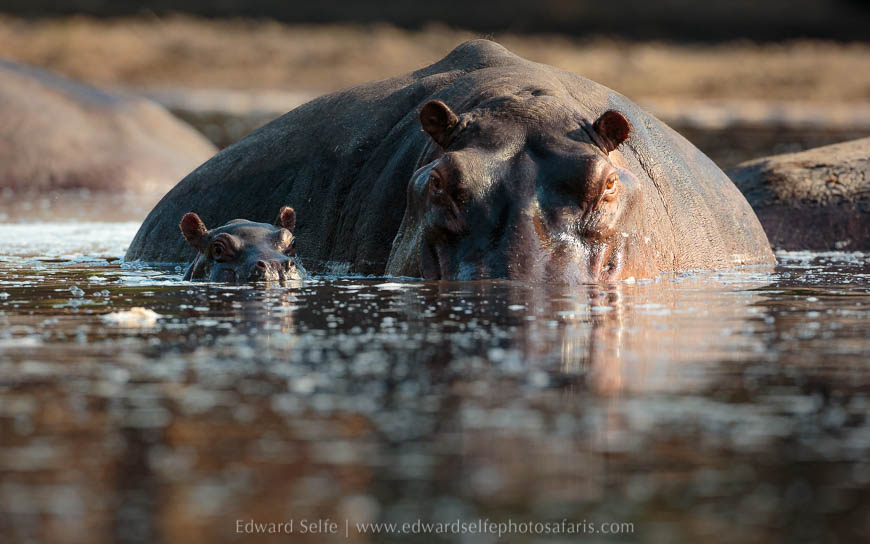
As we headed back down to Lufupa airstrip for my flight back to Lusaka, I chatted more to Phil about bringing photo safari groups to their camps. Such service-oriented guides as Phil and Tyrone would give a superb experience and I can see that they have the wildlife to back up their claims that Kafue offers a safari experience to match Luangwa’s. I am really excited about the prospect of working with guides who prioritise the guests’ experience much as I do and who work hard to make sure that each visitor has a fantastic safari. I am so grateful to them and to the teams at both camps who made me very welcome and showed me everything the Kafue has to offer.
For photo safaris to the vast and remote Kafue National Park in 2020 and beyond, visit my Photo Safaris page, or direct access to the tour page.


